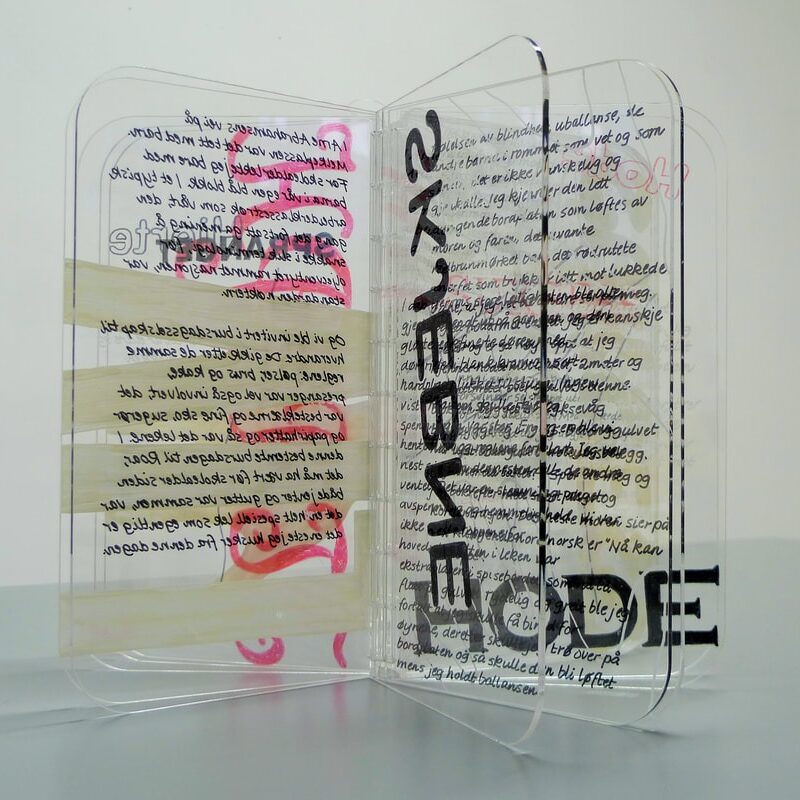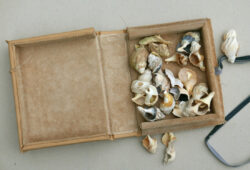Rita Marhaug has a work called Second Skin made for M K Ciurlionis National Art Museum, Lithuania, together with works from other artists displayed under (Un)Familiar: An installation of a brownish-grey and soft fabric, 15 x 15 m dimension, hung similar to the “skin” from one of the museum’s walls. The fabric ends as being spread all over the museum’s floor and a small green bust in ceramic has been laid somewhere between pile of its layers. The skin which is stretched and continues to be “stretched,” in a section of the installation acts as curtains which have to be drawn in order to uncover the hidden behind, and in other section it penetrates the present moment and our status quo in order to make its presence certain.
Marhaug’s art is entirely in debt to life and routineness, it is in debt to an obsessed scrutiny and precision in the trivial and (un)seen details. The deconstruction or breaking habit with the surrounding and intellectual concepts are not necessarily to accentuate the ephemeral (making a certain approach in Marhaug’s praxis though), but aims to suspect and oftentimes ridicule the monolithic and impenetrability of the binaries—to put finger into the static beauty, stir and let the sanies blow out in the air. Therefore, the medium is in the service of the idea; and the artist’s creative praxis, although sometimes is along with handmade objects, mostly includes installations from her three key methods of drawing, print and photography—with performance joining them later.
The admixture of the artistic techniques implies the destruction of the perspective and dissolution of the artist’s subjectivity as an author ironically. Thus, Marhaug’s recent installation spaces have entirely unsettled the reality borders and they depict an imaginary and surreal world: curved lines and shapes hanging in the space, suspended and scattered blood stains, mutilated bodies of the children without any identity who still keep playing games, the relation between the human being and animal which renders in forms of fur and skin, etc.
The obsession with carving details passes through artist’s personal life and her relation with the issue of family—a concern which makes her questioning the essence of things, artist’s status and even her own identity as an individual. Furthermore, the body and its ephemeral quality make Marhaug’s both subject and major material of work and she employs the body of her own and her family in them. For her, the body and relational terms reflect complex forms of power and gender functions and this precisely make aspects of her works interpretable based on the feminist approaches; everyday life’s practices, language games and capital systems that shape the human (also animal and natural) relations based on intangible repetitions.
In creating her handmade books, Marhaug again applies a kind of conscious, meticulous sensitivity and captures the temporal feature of subjects. She speaks of intellectual and behavioral systems ironically, from a conceptual viewpoint (by making use of the textual, semantic and interpretative features) and in physical regard (by respecting the plan and structure which receives the content precisely): criticizing medium-receptibility, text’s communicative limits, seizure of the subjects and eventually herself as an artist who now appears in position of the author.
 Projects
Projects  The Skin that Is Stretched
The Skin that Is Stretched

